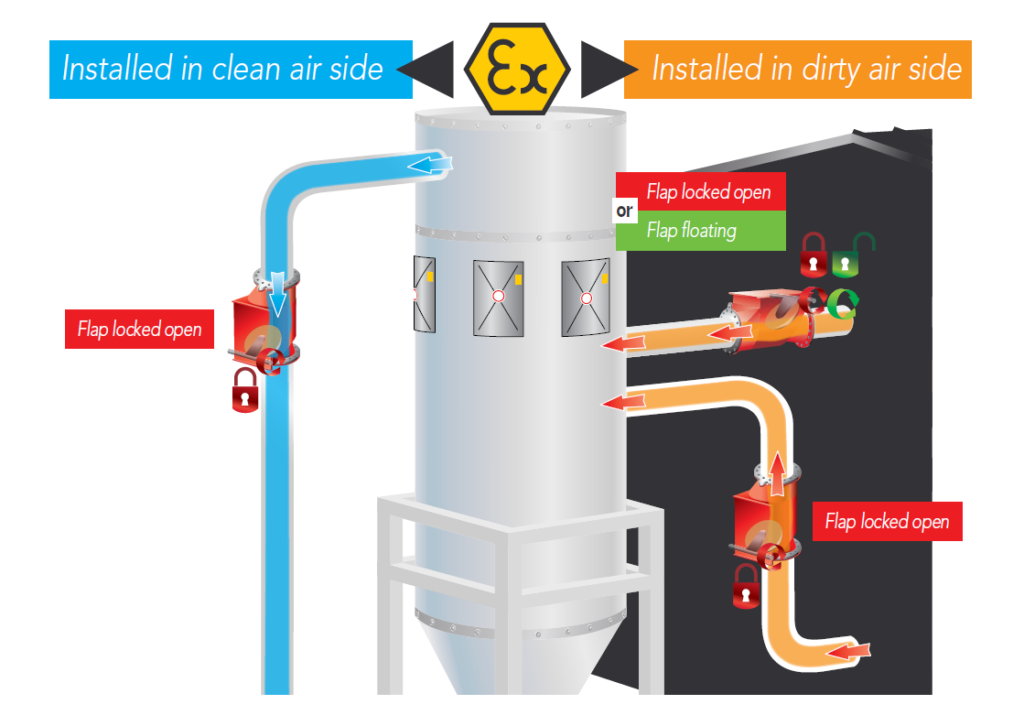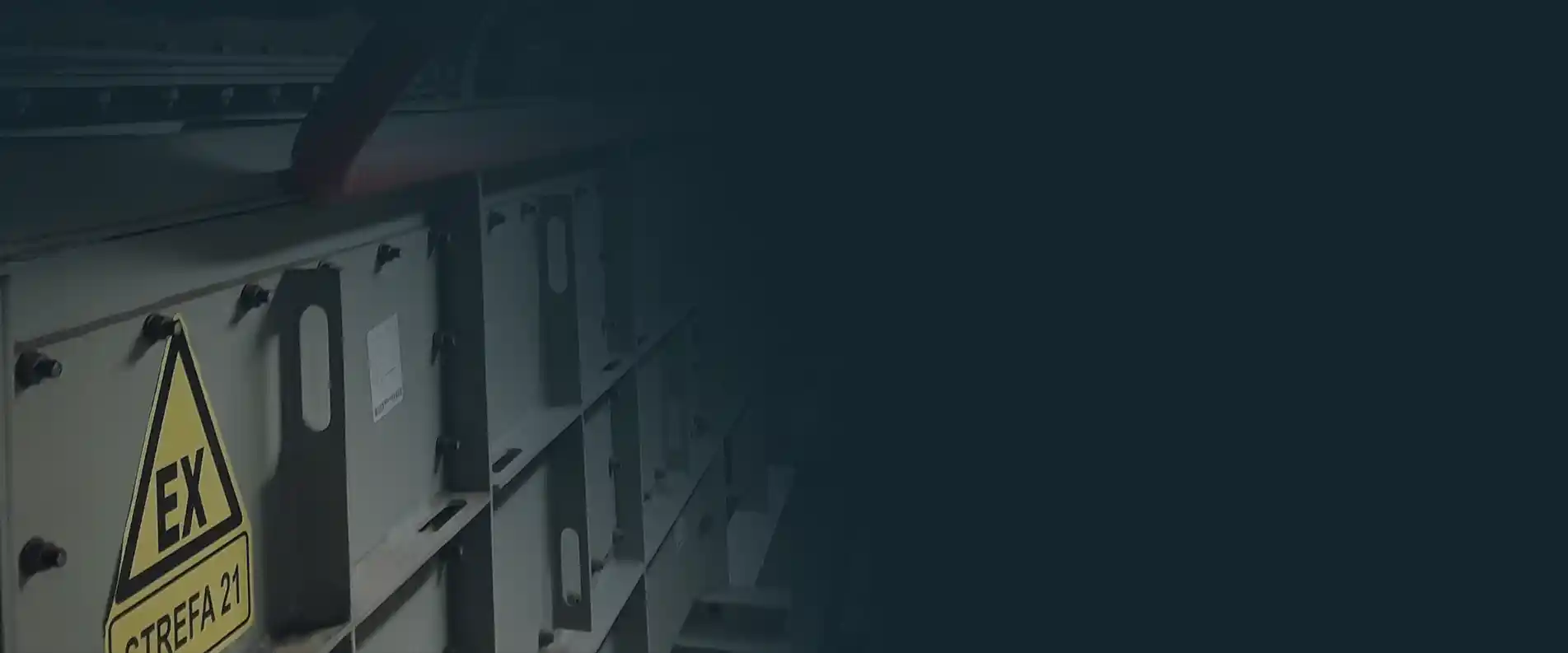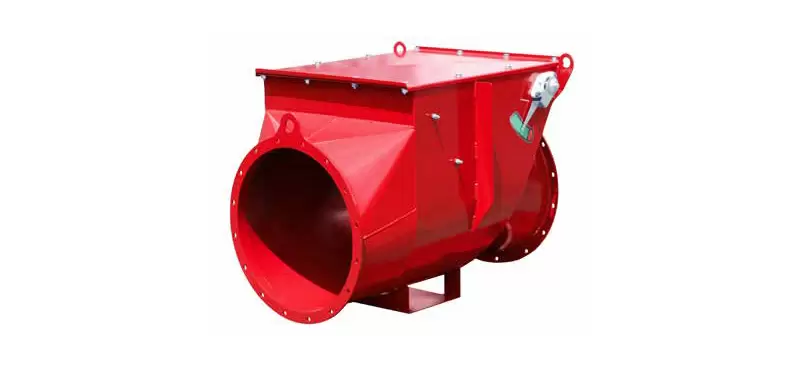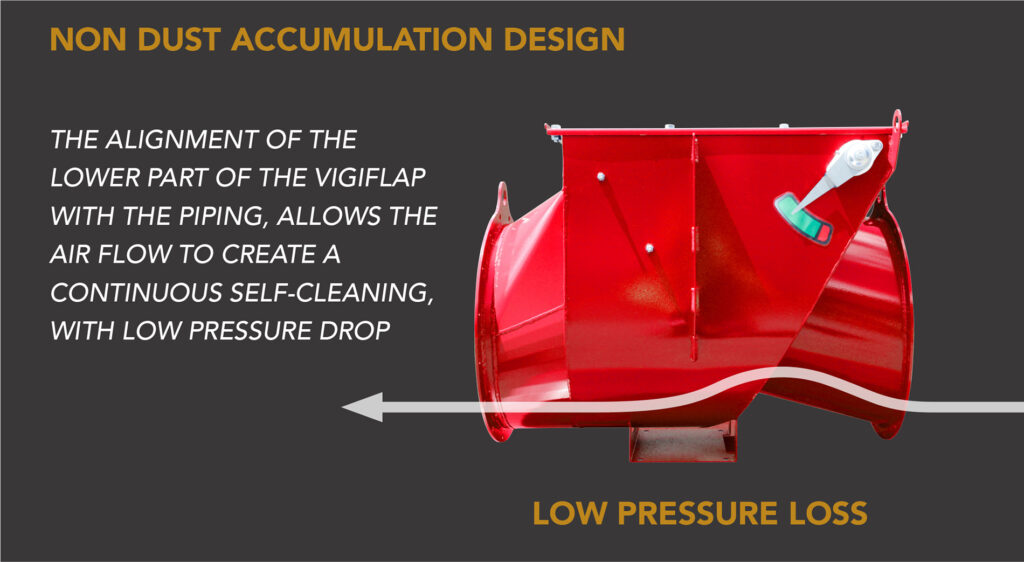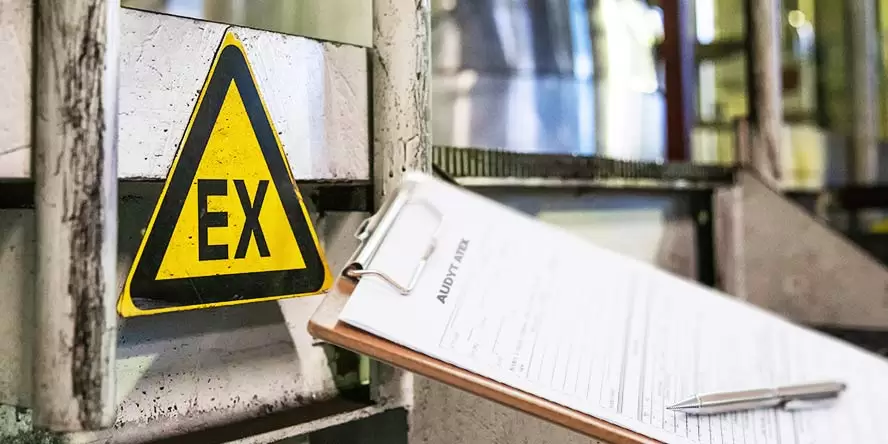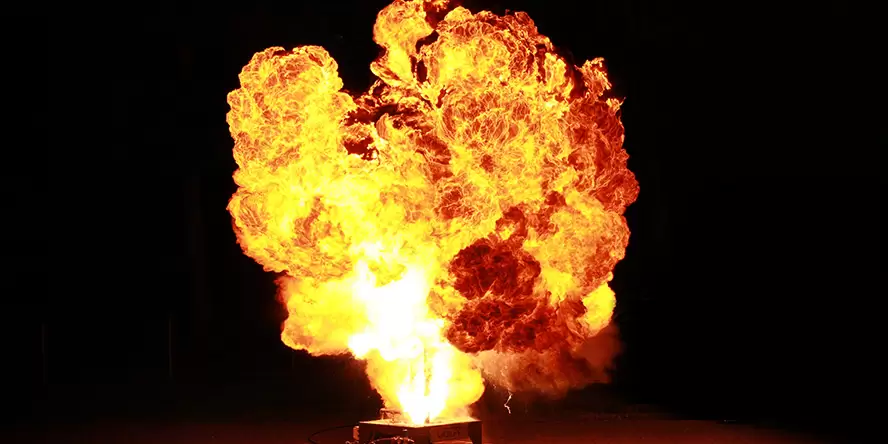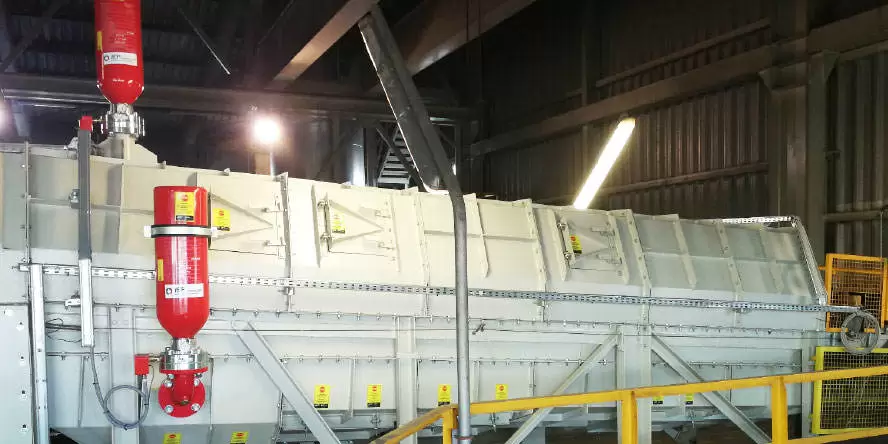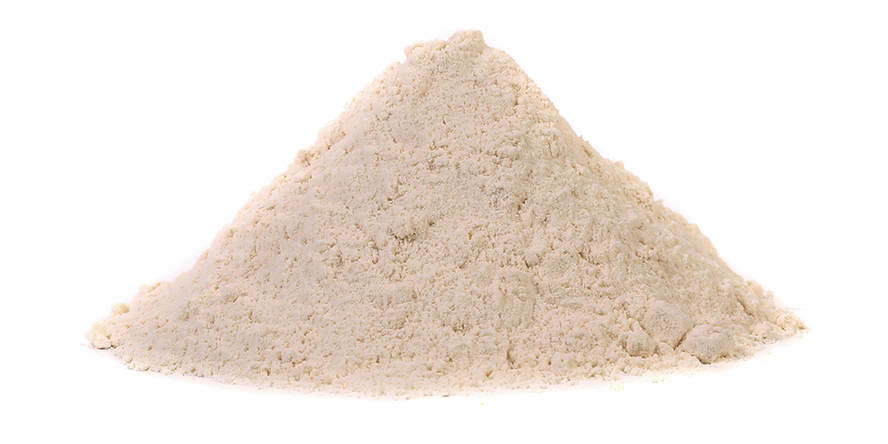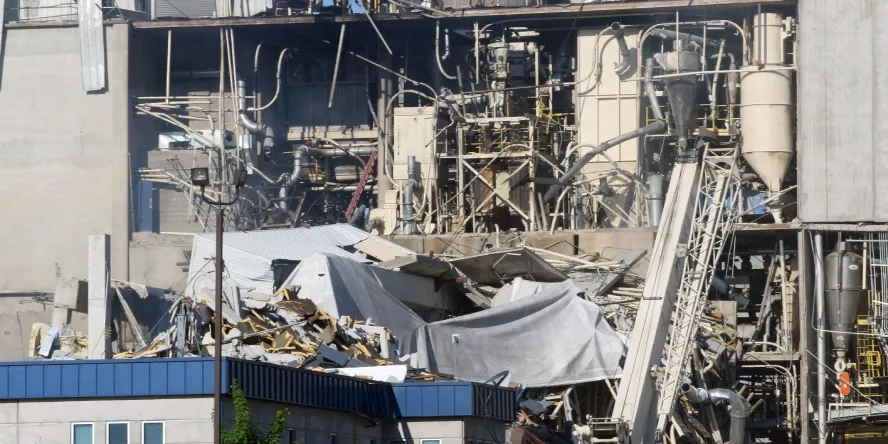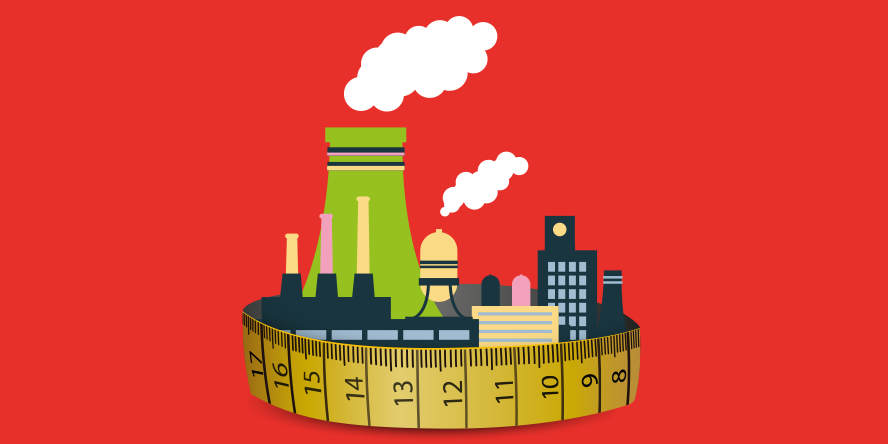VigiFLAP non-return damper
As the only explosion-proof non-return damper on the market, it can be placed on vertical pipes and on the clean side of filters, effectively isolating the explosion. This is possible thanks to the use of technology that keeps the damper open until the explosion spreads. In the event of an explosion, the valve closes and remains locked, preventing the spread of the explosion and flame. The damper must be unlocked manually. Additionally, the VigiFLAP has a certificate for metal dusts.
- Applications as explosion protection for: organic, synthetic dusts, and metal dusts.
- Atex zone inside the installation: Zone 20, 21, 22
- Atex zone outside the installation: Zone 22
- Maximum reduced explosion isolation pressure – Pred: 0.5 bar
- Maximum value – Kst: 250 bar x m/s
- Maximum working pressure: 50,000 Pa
- Maximum air flow speed: 30 m/s
- Minimum installation distance of the flap from the potential explosion source: 3 meters for horizontal installation 5 meters for vertical installation
- Maximum installation distance of the flap from the potential explosion source: 17 meters
VigiFLAP dampers are the only ones on the market that can be installed both horizontally and vertically.
